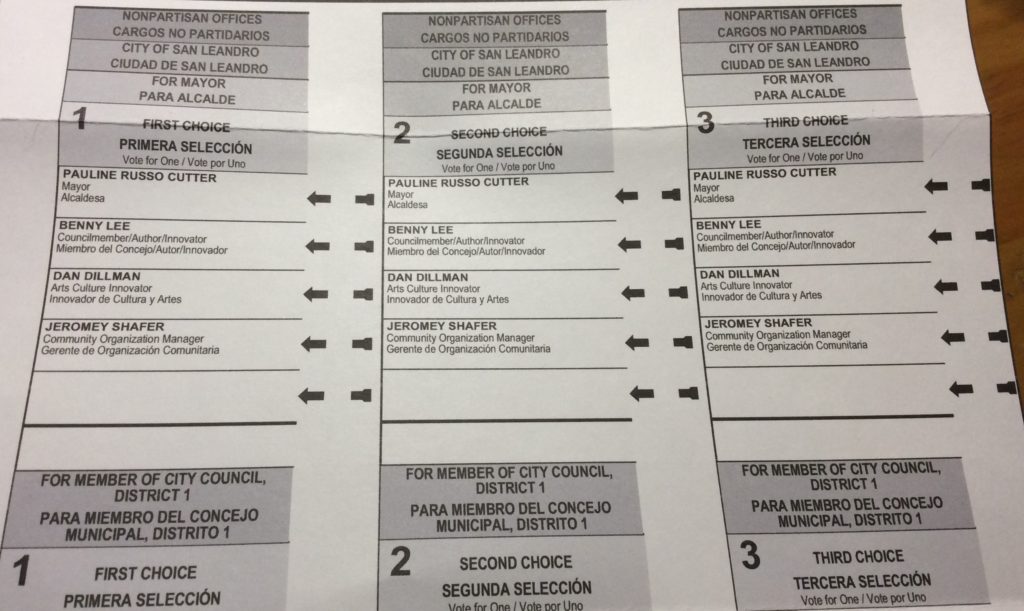
By Pedro Hernandez
San Leandro didn’t make a name for itself by sticking with the status quo.
The city of progress embraced innovation at every turn, from the iconic downtown pedestrian path to its fiber optic loop connecting businesses and residents to free wifi. It’s no surprise that San Leandro was at the forefront of election reform, joining its Bay Area neighbors to bring ranked choice voting (RCV) to city elections.
It was a logical fix for San Leandro, easily and effectively eliminating the costly top-two runoff while preserving the democratic principle that candidates need majority support to win elections.
The easy, 1-2-3 system empowers voters to rank their top three preferences on the ballot. If no candidate has a majority of first choice votes after the initial tally, the candidate with the fewest votes is eliminated. Those who ranked that candidate as their first choice have their ballots counted for their next choice. This instant-runoff continues until a candidate wins with more than 50 percent of the votes.
The 2010 debut in San Leandro – the same year as Oakland and Berkeley began using RCV – proved an early success for the more fair and democratic voting system.
Voters took to the polls in droves – turnout in the mayoral race jumped 11 percent compared to the November 2006 runoff, and a whopping 54 percent more than the June 2006 primary.
The ballots cast showed voters understood and appreciated the new system right away – 75 percent ranked at least two of the five mayoral contenders.
And the exceptionally close nature of the six-way contest – just 74 votes separated incumbent Mayor Tony Santos from challenger Stephen Cassidy in the first round – made voters’ choices all the more impactful, with more than 85 percent of ballots still counted through the sixth and final elimination round.
Though Santos carried a narrow lead in the first round, Cassidy’s win was the most fair outcome. Cassady appealed to more voters, allowing him to pick up the second and third choices needed to secure a majority.
The path of progress continued with successes in San Leandro’s subsequent council and mayoral RCV elections, which engaged high numbers of voters to cast accurate ballots that gave rise to a group of elected officials who not only received the broadest possible support of their constituents, but better reflected the city’s increasingly diverse population.
The four races decided by in 2014 were held in one election with RCV instead of two. It gave San Leandro its first city council that was majority-female and people of color, including the first elected representative of the Latino community, Councilwoman Corina Lopez in District 5.
The more reflective city hall is part of a larger trend in cities across the Bay Area that have seen significant increases in representation for women and people of color since adopting ranked choice voting, as several studies have shown.
And voters continued to give top marks to ranked choice voting, indicating they understood it and wanted to keep it, including previously disenfranchised groups such as young people, people of color and low-income voters, according to a 2014 survey. Ranked choice voting rewards candidates that seek support from beyond their base, which in turn, leads to more civil and issue-driven campaigns.
The upcoming ranked choice voting elections on November 6 give San Leandro another chance to remind the rest of the country that we lead the way toward a better future, including in our government elections. Show up, rank your ballot and stand for the progress, fairness and diversity.
